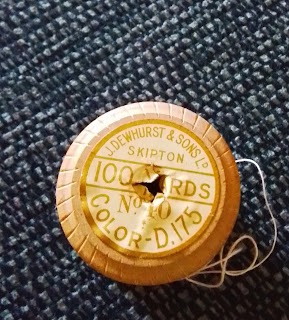A Second Visit to the Archives
I made a second visit to the Manchester Archives to view some more of the English Sewing Cotton Company material. It is a huge archive and it's difficult to know what to choose to look at - which documents will hold the most information? There are no previews online - just a list of what the archive contains. This time around, I decided to view some meeting minutes. There are Directors' Minutes and Executive Committee Minutes for practically the whole of the life of the ESCC. Too much to see all at once. Again - it's difficult to know what to select because there is no indication of the size of each item. In the end I selected one lot of Directors' Minutes and four lots of Executive Minutes. This did turn out to be too much - meetings were held very regularly and the books containing the typed sheets of notes were rather large. I was unable to do it all justice in the 3 hours I had at my disposal. However, I picked out a few snippets of information to bring away with me as well as a few general overview impressions.
The Directors' Minutes dealt with things such as the company finances and shares, the acquisition of other companies and new sites, senior management and the promotion of the ESCC around the world. Meanwhile the Executive Committee minutes handled the more day-to-day matters such as staff issues, producton quality, safety and complaints. The discussions around staff, their wages and pensions was quite interesting. In 1946, a new Assistant Manager of "the Skipton branch" (Belle Vue Mill, the home of Sylko) was appointed. He was given a salary of £575 plus a cost of living bonus, giving him a gross salary of £747.10.0. At the same site in 1930, the retirement of several mill workers was due to take place and their future discussed by the Executive Committee. A Nightwatchman who had given 54 years' service was awarded a pension of 10 shillings per week. A Foreman, also of 54 years' service, was awarded a pension of 12/6 per week.
It was interesting to read about some of the grumbles and niggles that beset the company. Their flagship headquarters, Arkwright House in Manchester (just a few minutes walk away from the Archives) seems to have given the management a bit of grief. Some of the swing doors had unsatisfactory springs, while the Manchester rain ensured that several walls and ceilings were affected by damp. The traffic noise was so annoying to workers, the ESCC looked into the cost of asphalting Back South Parade to ease it a bit.




Comments
Post a Comment